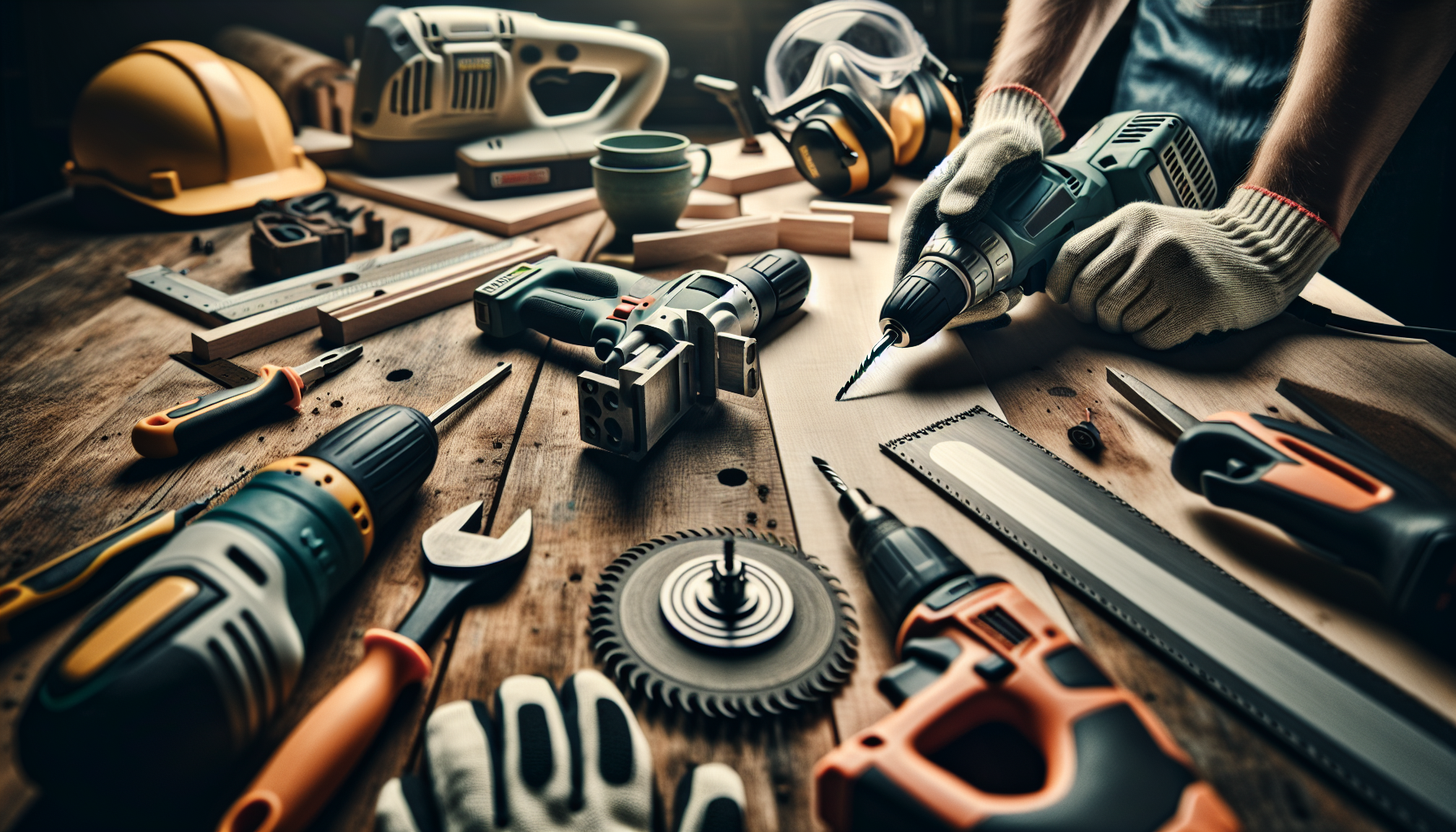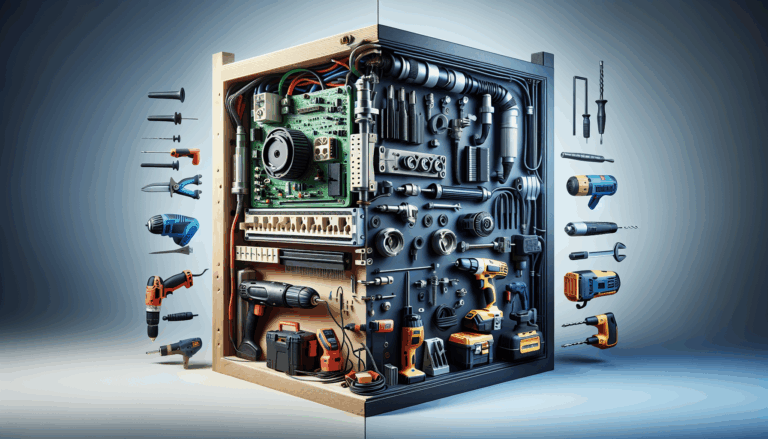Power Tool Batteries | One Power Tool

Understanding Power Tools and Their Basic Usage
Power tools are indispensable devices designed to make various tasks faster, more precise, and less physically demanding. Powered by electricity, batteries, or compressed air, these tools encompass a broad range of equipment such as drills, saws, sanders, grinders, and impact drivers. Knowing how to effectively operate each type is essential for safety and efficiency. For instance, drills are primarily used for creating holes or driving screws, whereas saws are utilized to cut different materials like wood, metal, or plastic [source](https://onepowertool.com/blog/). Beginners should familiarize themselves with the specific functions and compatible attachments of each tool to maximize their productivity and ensure safe handling.
Crucial Power Tool Safety Practices
Safety is the cornerstone of effective power tool use. Proper practices include always donning personal protective equipment such as safety glasses and gloves to shield against flying debris and potential injuries [source](https://onepowertool.com/blog/). It’s also vital to keep the work area clean and well-lit, reducing the risk of accidents. Before operating, check that all tools are in good condition—inspect cords for frays, and ensure switches and moving parts function correctly. Follow the manufacturer’s instructions carefully and avoid loose clothing or jewelry that could get caught in the tool’s moving parts [source](https://onepowertool.com/blog/). For both novices and seasoned users, staying focused, avoiding distractions, and disconnecting power sources before changing attachments or performing maintenance significantly reduces the chance of mishaps.
Routine Maintenance for Power Tools
Proper maintenance ensures your power tools last longer and operate reliably. Regular cleaning after each project prevents dust, debris, and residues from causing overheating or wear. Use a soft brush or compressed air to clean vents and delicate components without causing damage [source](https://onepowertool.com/blog/). Lubrication, following the manufacturer’s recommendations, reduces friction in gears and bearings, and prevents rusting. Routine inspections are vital—look out for worn brushes, loose screws, frayed cords, or damaged switches. Addressing these issues early enhances safety and performance. If necessary, learn how to replace common parts such as carbon brushes or tighten loose connections, always unplugging the tool before maintenance [source](https://onepowertool.com/blog/). Consistent care maximizes both longevity and operational efficiency of your power tools.
Enhancing Projects with Power Tools
Harnessing the full potential of your power tools involves understanding their specialized applications and techniques. Whether you’re cutting wood precisely, drilling different materials, or sanding smooth surfaces, tailored guidance can significantly improve your results [source](https://onepowertool.com/blog/). Beginners can start with basic tutorials, while seasoned DIYers may seek advanced techniques like metalworking or intricate woodworking. Learning proper tool handling, selecting the right attachments, and following best safety practices will elevate your craftsmanship. For inspiration and technical advice, explore detailed tutorials available on our blog, where step-by-step guides help you turn ideas into reality with confidence [source](https://onepowertool.com/blog/).
Choosing the Right Power Tool Batteries
Power tool batteries are central to cordless operation, and selecting the right one is key to performance and longevity. The most common types include Lithium-Ion (Li-ion), Nickel-Cadmium (NiCd), and Nickel-Metal Hydride (NiMH) [source](https://batteryuniversity.com/article/bu-402a-lithium-ion). Li-ion batteries dominate due to their high energy density, lighter weight, and absence of memory effect, offering stable power until nearly depleted. NiCd batteries, once the standard, are more durable in extreme temperatures but suffer from memory effects and are heavier. NiMH batteries strike a balance, with higher capacity and fewer memory issues but shorter cycle life.
Compatibility is crucial—always use batteries recommended by the tool manufacturer to ensure safety and optimal performance. Proper care practices include avoiding complete discharges with Li-ion batteries, storing batteries in cool, dry locations, and using the original chargers. Regular inspection and cleaning of battery contacts help maintain good electrical connections. Following these guidelines extends the lifespan of your batteries and keeps your tools running smoothly [source](https://onepowertool.com/blog/).
Essential Power Tool Accessories and How to Choose Them
Selecting the right accessories—bits, blades, chargers, and cases—can significantly enhance your power tools’ performance and lifespan. For drill bits, high-speed steel or cobalt-tipped bits suit wood, metal, or masonry. Saw blades vary based on materials; for example, diamond blades excel in cutting concrete, while fine-toothed blades are preferred for finish carpentry [source](https://onepowertool.com/blog/). When choosing chargers, match them to the specific battery voltage and brand to prevent damage and maintain battery health. Investing in durable, impact-resistant cases with organized compartments protects your tools during transport and storage, prolonging their usability.
Proper accessories tailored to your projects boost efficiency, safety, and durability. For detailed advice on selecting and maintaining your power tool accessories, visit our comprehensive guide on the [One Power Tool Blog](https://onepowertool.com/blog/).
Comparing Major Power Tool Brands: DeWalt, Milwaukee, and Ryobi
Choosing between top brands depends on your needs—whether professional durability, innovation, or home convenience. **DeWalt** is renowned for its ruggedness and professional-grade reliability, especially in demanding construction environments, with its extensive 20V MAX system ensuring long-lasting power [source](https://www.dewalt.com/). **Milwaukee** excels in innovation, integrating advanced features like smart controls and high-performance brushless motors, serving professionals who require precision and efficiency [source](https://www.milwaukeetool.com/). **Ryobi**, targeting DIY enthusiasts and homeowners, offers affordability and system versatility with over 175 tools sharing the same batteries, making it a flexible choice for casual projects [source](https://www.ryobitools.com/). When selecting, consider your specific project requirements, budget, and existing ecosystem to make an informed decision.
For detailed comparisons and professional insights, check out the full guide on our [blog](https://onepowertool.com/blog/).
DIY Power Tool Repair and Troubleshooting
Maintaining your power tools through troubleshooting can save money and extend their service life. Begin by identifying issues—power failure, overheating, strange noises, or decreased performance—then systematically inspect components. Use a multimeter to test electrical parts like switches and cords, replace worn brushes, or clean motor vents as needed [source](https://onepowertool.com/blog/). Disassemble the tool carefully, following guide images or manuals, and keep track of small parts. Always unplug the device before any repair work. Common fixes include replacing damaged switches, tightening loose screws, or installing new brushes. When sourcing replacement parts, ensure they are compatible and genuine to avoid further damage [source](https://onepowertool.com/blog/).
Following these steps improves your confidence in DIY repairs and can help avoid costly professional services. For more detailed advice and troubleshooting guides, visit our [Power Tool Maintenance Blog](https://onepowertool.com/blog/).
Creative DIY Projects Using Power Tools
Power tools open up endless possibilities for personal projects—from simple furniture to intricate woodcrafts. Whether just starting out or experienced, you can find plans tailored to your skill level. For beginners, simple projects like picture frames or shelves are great introductions, while advanced makers might pursue building a custom workbench or decorative wooden signs. Each project outlines essential materials, step-by-step instructions, and vital safety tips, ensuring a smooth process from start to finish [source](https://onepowertool.com/blog/). Using your tools properly and following safety guidelines improves results and makes the experience more enjoyable.
Explore our extensive collection of DIY tutorials for ideas and expert advice to help transform your creative visions into reality while honing your skills.
Summary
Mastering the foundational aspects of power tools—from understanding their types and proper usage to safety practices and maintenance—empowers users to work confidently and safely. Selecting the appropriate batteries and accessories tailored to your specific needs maximizes your tools’ performance and lifespan. Comparing brands based on your project requirements ensures you invest in the right equipment, whether for professional or casual use. Regular troubleshooting and DIY repair awareness extend tool life and save money. Lastly, engaging in creative projects with your power tools offers satisfying opportunities to learn, innovate, and produce high-quality work at home.
For more in-depth advice, safety tips, and project ideas, visit our full resource library at One Power Tool Blog.


